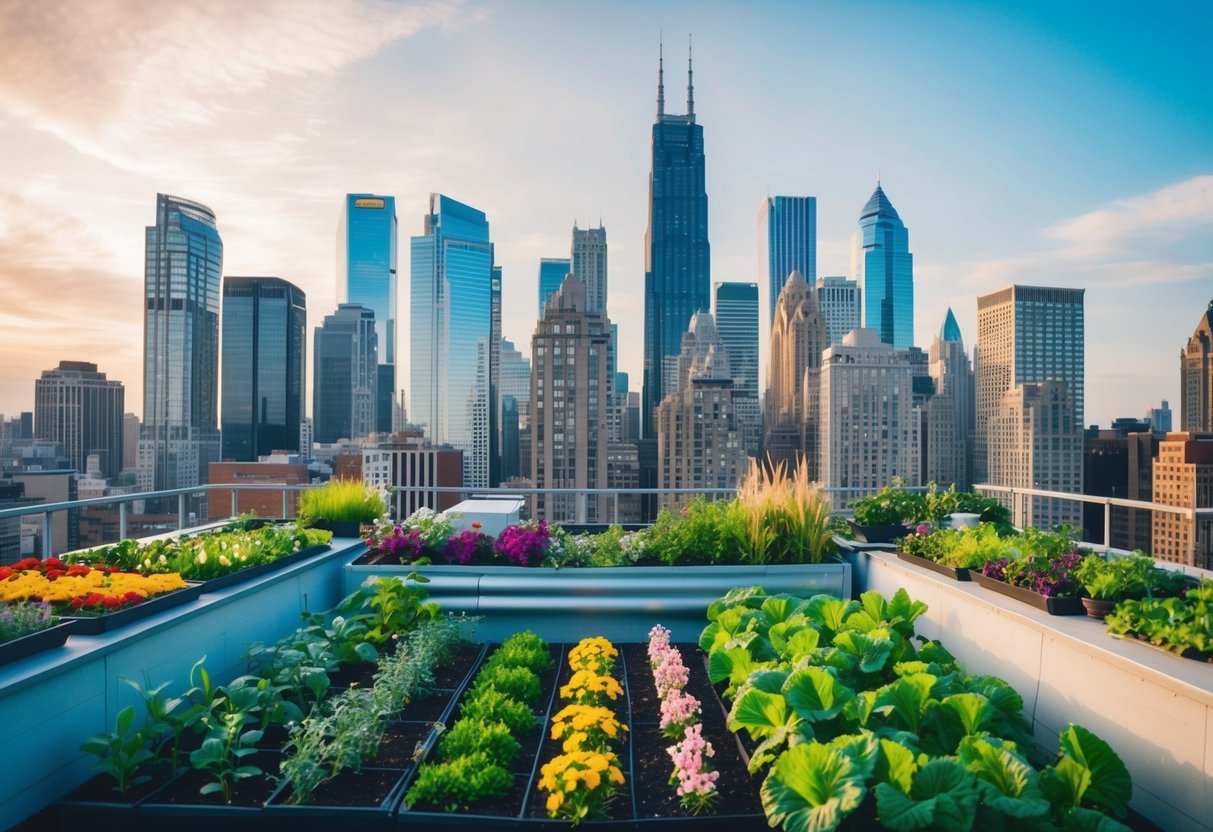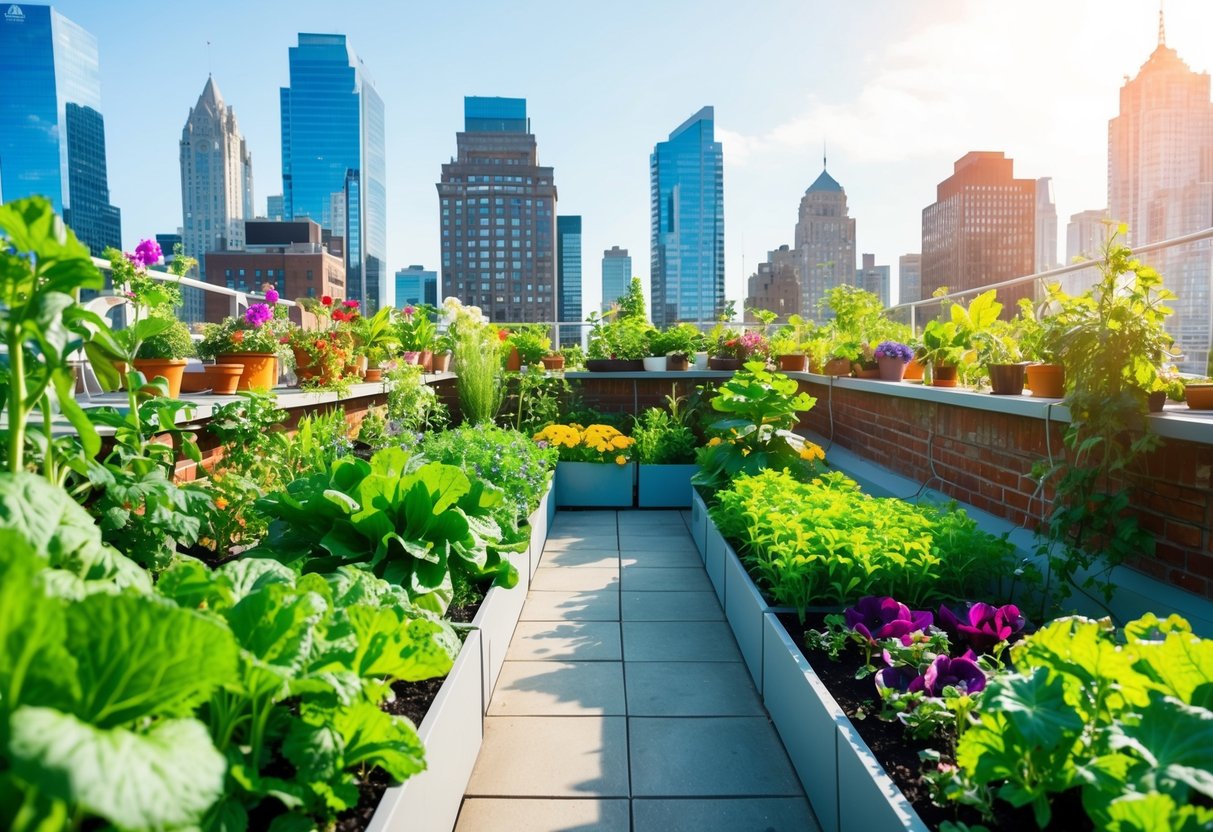
Maximizing Space and Resources

Urban rooftop gardens offer a unique opportunity to create vibrant green spaces in bustling cityscapes. Transforming limited city spaces into thriving gardens requires efficient use of vertical areas and resource-conserving practices.
Utilizing Every Inch with Creative Ideas
Space efficiency is crucial when starting an urban rooftop garden. City dwellers can use vertical gardening techniques such as trellises and stacked planters to maximize available space. Stacking pots on shelves or using wall-mounted planters allows for the cultivation of more plants without occupying extra floor space.
Small containers or raised beds can be positioned strategically to increase plant variety. For those with even smaller areas, hanging gardens using sturdy hooks or railings can provide additional capacity. By selecting compact plant varieties, one can further optimize limited space, ensuring that every inch is effectively used.
Energy and Resource Conservation Techniques
Resource conservation is vital in maintaining sustainable rooftop gardens. Collecting rainwater in barrels or installing drip irrigation systems minimizes water waste. These systems deliver water directly to the roots, reducing evaporation. Utilizing renewable resources such as solar-powered lights and pumps assists in decreasing energy consumption.
Selecting native plants can reduce the need for heavy fertilization and excessive watering, as they are naturally suited to local climates. Organic waste from plants can be composted to enrich the soil. This practice returns nutrients to the garden, improving plant growth without the need for chemical fertilizers. Through these techniques, resource efficiency in an urban setting can be achieved, promoting a thriving rooftop garden.
Benefits of Urban Rooftop Gardening

Urban rooftop gardening offers numerous advantages to city dwellers, positively impacting the environment and contributing to community well-being. It enhances air quality, reduces the urban heat island effect, and supports biodiversity and food security.
Improving Air Quality and Reducing Heat Islands
Urban rooftop gardens enhance air quality by filtering pollutants and producing oxygen. Plants on rooftops can absorb airborne particulates, thus purifying the surrounding atmosphere. This is particularly beneficial in densely populated urban areas where air pollution is a significant concern.
Rooftop gardens provide green spaces that help mitigate the urban heat island effect. By absorbing sunlight and reducing surface temperatures, rooftop gardens can lower overall city temperatures. This cooling effect reduces the reliance on air conditioning, which in turn decreases overall energy consumption and greenhouse gas emissions.
Contributing to Biodiversity and Food Security
Rooftop gardens provide habitats for various species, enhancing urban biodiversity. They support pollinators such as bees and butterflies, contributing to the health of the local ecosystem. The presence of diverse plant species on rooftops attracts beneficial insects and birds, which further enrich the urban tapestry.
In addition to ecological benefits, rooftop gardens can bolster food security by offering city dwellers the opportunity to grow their own organic produce. This can lead to increased access to fresh vegetables and fruits, reducing dependency on large-scale food supply chains. Urban communities can benefit from the availability of fresh, locally grown products, fostering a sense of self-reliance and sustainability.